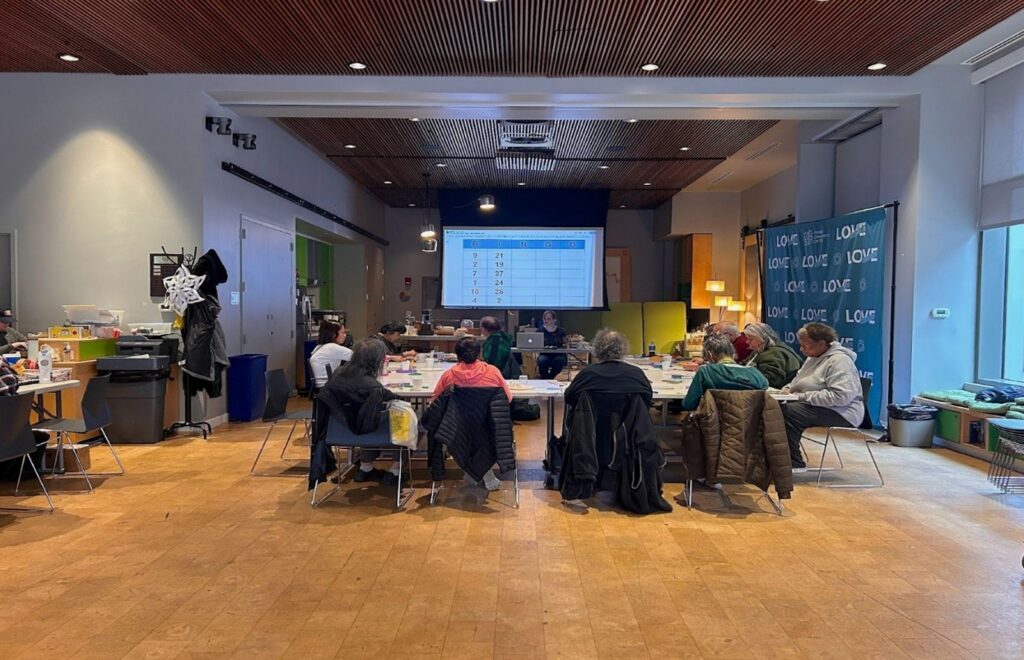The COVID-19 pandemic and its Delta, Omicron, Deltacron, and additional variants have upended reality and transformed society. Since tracking began in March 2020 through April 2022, there have been 80,476,479 COVID-19 cases and 986,123 deaths (Centers for Disease Control and Prevention [CDC], 2022a).
Due to the COVID-19 pandemic, the social fabric of the United States has unraveled, and Americans must embrace new ways of interacting with each other and addressing the pre-COVID-19 pandemic challenges that have been compounded by the ongoing public health crisis. These challenges include: (a) low-wage essential labor; (b) underfunded public health infrastructure; (c) lack of affordable and accessible housing, education, and transportation; (d) discrimination against underserved communities, and (e) disparities in healthcare from prevention and accessibility to point of care.
Government entities, public institutions, and private businesses have worked to adapt to this new reality; however, the overall response has been disjointed and nonuniform. This has exacerbated a landscape where access to healthcare resources is not equitably available, disinformation has emerged as a public health threat, and vulnerable communities are at even greater risk of social outcomes (e.g., isolation) and deadly consequences. Combined with a fluctuating political and economic landscape, these challenges create almost insurmountable barriers for practitioners and organizations working with older adults and their families and caregivers.
On an individual level, every aspect of life has been impacted—from people’s mental and physical health and ability to secure basic needs (e.g., food, housing) to people’s jobs and capacity to financially plan and maintain wealth. This has been particularly true for those most acutely impacted—older adults, immunocompromised individuals, marginalized communities, and/or essential workers and caregivers. From the onset of the COVID-19 pandemic, researchers and health experts (CDC, 2022b, 2022c) named older populations and those with underlying medical conditions at increased risk for severity of COVID-19 and death but stopped short of acknowledging the racial and the ethnic disparities in those populations.
‘On an individual level, every aspect of life has been impacted.’
According to Gawthrop at the AMP Research Lab, White people died from COVID-19 at a rate of 1:319 or 313 deaths per 100,000 people and Black people died from COVID-19 at a rate of 1:303 or 330 deaths per 100,000 people. For further context, Black people represented 14.3% of all COVID-19 deaths and represent 12.9% of the total United States population.
Age-adjusted rate of death increased for all racial demographics except White people. The CDC said in Gawtrop’s report, “adjusting by age is important because risk of infection, hospitalization, and death is different by age, and age distribution differs by racial and ethnic group. If the effect of age is not accounted for, racial and ethnic disparities can be underestimated or overestimated” (para. 11). These disparate outcomes will continue to have ripple effects impacting the well-being of older Americans throughout the nation, placing considerable strain on existing care systems.
The United States has come a long way with widely available vaccines, more successful treatments, and a greater understanding of the COVID-19 pathology. As of April 2022, 65.9% of the total population in the United States was fully vaccinated and 77.4% of the population has received at least one dose of the vaccine (Mayo Clinic, 2022). Of persons ages 75 and older, 86% of the population has received their full vaccination and >95% of the population has at least one dose of the vaccination (USA Facts, 2022). USA Facts also shared that 92% of people ages 65 to 74 have received their full vaccination and 95% of people ages 65 to 74 have had at least one dose of the vaccine. Political and philosophical differences and polarization have prevented more Americans from taking advantage of these advances.
The COVID-19 pandemic continues as new variants emerge and cases slowly trend upward (CDC, 2022a). The effects and the ramification of the COVID-19 pandemic will be felt for decades as it evolves into an endemic. As society readjusts to a new normal, the government, public, and private sectors need to take into special consideration the needs of people most affected by COVID-19 and how the new endemic reality will affect aging, to ensure older adults thrive.
Why a Journal Issue on COVID-19 and Midlife and Older Persons?
A Generations Journal issue focused on COVID-19’s impact on midlife and older persons is timely and important. In this issue, the writers and editors holistically address the challenges and the lessons learned in the first 18 months of the COVID-19 pandemic related to the aging population.
Section 1 looks at a range of care settings including: (a) congregate housing, (b) nursing homes, (c) assisted living facilities, and (d) acute care in hospitals. This section also considers the perspectives of caregivers who provided services at the aforementioned facilities and insight into the role of public health in delivering care. Authors in this section share information on the vaccine uptake among older adults and residential staff based on the first 18 months of the pandemic.
Section 2 hones in on broader policy and financial impacts of the COVID-19 pandemic response on a global, national, and individual scale; lessons learned; and implications for the future.
Lastly, Section 3 centers on the social and behavioral impacts of the past 18 months by examining the mental health effects on older adults and intergenerational perspectives, evaluating the roles of racism and ageism in the ongoing pandemic response, and providing firsthand experiences of older adults.
The themes presented through this issue are fourfold and emphasize the multifaceted approach we seek to explore as we continue to move through and beyond COVID-19. They include:
- Equity—Approaching solutions such as policy, financial, individual, social, and organizational changes through a multicultural and multiracial lens; therefore, centering those who have been most impacted by COVID-19.
- Diversity—Intentionally featuring a multitude of authors who bring voices from across the spectrum of experiences as they relate to aging, caregiving, and midlife and older adults.
- Inclusivity—Naming the economic, societal, and individual consequences of the COVID-19 pandemic to our public health systems, workplace infrastructure, public services, and household well-being.
- Systemic Solutions—Addressing the underlying elements that comprise the United States’ economic, organizational, healthcare, and societal systems that delivered the pandemic response.
Challenges and Opportunities
There are many challenges in writing about ongoing events as researchers, healthcare workers, caregivers, and policy makers continue to learn about COVID-19 and best practices. This issue highlights data from 2020-2021 and emergent lessons from authors who name current implications and opportunities for change. The Guest Editors recommend a follow-up issue on the impacts of COVID-19 when we, as a nation, can look back at the arc of the disease and its impacts on the populations, the communities, and the individuals affected.
As COVID-19 and its variants continue to burden vulnerable communities, it is imperative for national organizations, practitioners, and businesses to center the lived experiences of those most at risk. In the earliest days of the pandemic, our nation was immediately forced to confront the overlooked reality that we have not served and supported our country’s most vulnerable communities. For the United States to emerge from this crisis, no single person or community can be overlooked—we need to seize opportunities for all persons to be as healthy and well as possible.
‘The effects and the ramification of the COVID-19 pandemic will be felt for decades.’
The risks and prolonged uncertainty of the pandemic has left Americans older than age 50 with several unprecedented challenges in achieving their goals related to personal health, wealth, and self. In too many instances, the outlook is dire and reveals the need to do more to ensure older Americans have the resources and tools to live with dignity as they age. Part of any equitable response requires the understanding that communities who were first impacted were the most affected and likely will be the last to recover. It is crucial for this edition of Generations Journal to elevate local and trusted voices with deep knowledge of the communities most at risk.
In this new normal, there are no singular solutions and any strategy for an equitable response must be continuously evolving and multifaceted. We do not know what the future holds; however, we hope this issue helps elevate discussions and helps society be better prepared.
Robin Mockenhaupt is a consultant who spent 21 years at the Robert Wood Johnson Foundation, the largest foundation devoted to health and healthcare in the United States, and prior to that worked for 14 years at AARP in Washington, DC. Edna Kane Williams is Executive Vice President and Chief Diversity Officer for AARP in Washington, DC.
References
Centers for Disease Control and Prevention (CDC). (2022a). COVID Data Tracker, April 18. Retrieved April 20, 2022, from https://covid.cdc.gov/covid-data-tracker/#datatracker-home.
CDC. (2022b). Clinical Questions About COVID-19 Questions and Answers, April 8. Retrieved April 20, 2022, from www.cdc.gov/coronavirus/2019-ncov/hcp/faq.html#:~:text=Currently%2C%20those%20at%20greatest,the%20patient%20has%20symptoms.
CDC. (2022c). People with Certain Medical Conditions, February 25. Retrieved April 20, 2022, from www.cdc.gov/coronavirus/2019-ncov/need-extra-precautions/people-with-medical-conditions.html.
Gawthrop, E. (2022). The Color of Coronavirus: COVID-19 Deaths by Race and Ethnicity in the United States. APM Research Lab. Retrieved April 20, 2022, from https://www.apmresearchlab.org/covid/deaths-by-race.
Mayo Clinic. (2022). U.S. COVID-19 Vaccine Tracker: See Your State’s Progress. Retrieved April 20, 2022, from www.mayoclinic.org/coronavirus-covid-19/vaccine-tracker.
USA Facts. (2022). U.S. Coronavirus Vaccine Tracker. Retrieved April 20, 2022, from https://usafacts.org/visualizations/covid-vaccine-tracker-states/.













